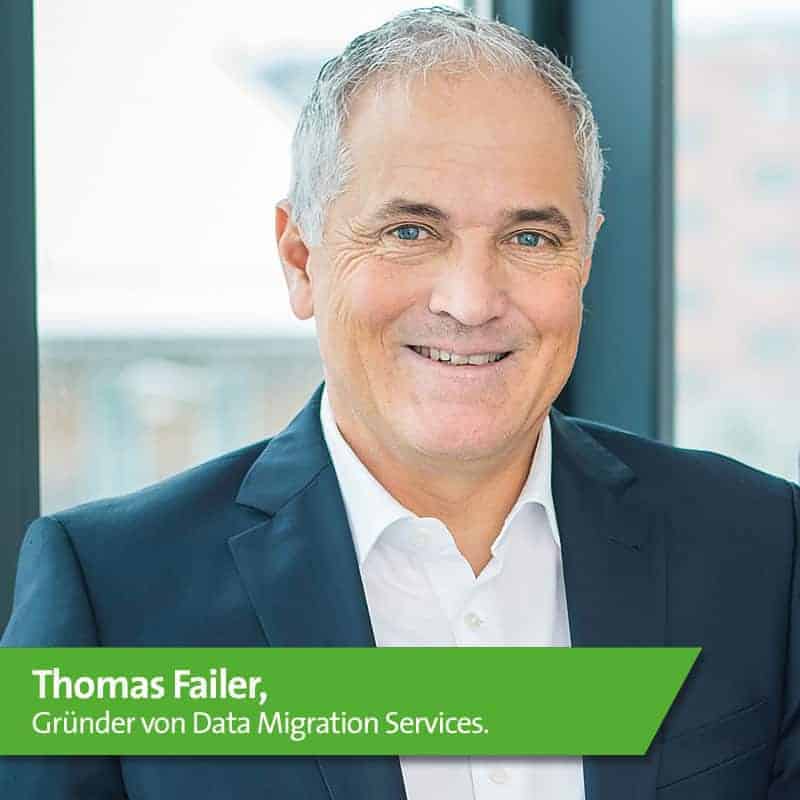What agility has to do with SAP legacy systems


Historically grown SAP landscapes often resemble heavy tankers that can only change course with great delay. This is due less to the size of the ships than to the weight of their cargo. Their inertia prevents fast changes of direction, even when the rudder is jerked around.
Like tankers, SAP and other systems carry a heavy cargo: data and documents, only a small part of which is needed in day-to-day work. Whatever agility and flexibility IT managers add at the systems and applications level is offset by the business and legal stability required at the data and document level. This common problem occurs in a wide variety of scenarios.
Merger & Acquisitions
When company acquisitions are sealed, there is great joy - among the management. But as soon as the ink is dry on the contracts and the champagne drunk, the work begins in IT.
After all, the buyer not only takes over markets, employees and customers, but also IT systems, the number of which quickly runs into the hundreds, especially in the case of larger companies, including a large number of SAP systems of various releases.
Of course, it makes no economic sense to continue operating all these systems. However, shutting them down does not seem to be an option either. After all, they contain valuable data and documents that mean hard cash for the buyer.
In addition, they are subject to a wide variety of retention obligations and periods. The information must be retained for many years, sometimes decades, after purchase and made available as needed until its controlled and documented deletion, as required in particular by the European General Data Protection Regulation (EU GDPR).
Consequently, company acquisitions always mean complex integration and migration projects for IT departments. Decisions have to be made as to which applications should be taken over by the purchased company because they have advantages over the company's own, and which are no longer needed. Directly related to this is the question of which data and documents should be migrated to the live systems.
During a migration, the structure of the migrated data and documents in such a project is usually changed. Internal or external auditors would therefore not trust that the migrated information corresponds exactly to the original.
Therefore, even with only a partial migration of the data and documents from those taken over at the time of purchase, the IT systems would have to continue to be operated and upgraded for new requirements such as the EU-DSGVO.
The latter requirement in particular is technically no longer possible with many legacy systems, or can only be realized with a great deal of effort. However, this means high costs in any case.
Bank settlement
The financial crisis of 2008 has still not been overcome. Many banks continue to suffer from bad loans that could threaten their existence at any time. In addition, there are ever more and ever stricter regulations designed to reduce the risk to the financial system as a whole due to the difficulties of individual banks. Even if these are well-intentioned, they are in some cases a considerable burden on banks' earnings power.
Banks that are no longer willing or able to cope with the compliance burden and institutions that are not viable are sold or wound up in hive-off vehicles.
Regardless of whether customers are acquired or the business is discontinued altogether, buyers or successors are required to retain all customer information for ten or more years.
However, these are - typical for banks - distributed across a large number of systems: These include bank-specific in-house developments and SAP systems as well as commercial e-mail solutions, systems for document management or enterprise content management, and even audio archives in which consulting sessions with customers are stored as digital recordings.
In order to continue to access the legacy data and documents, all legacy systems must be taken over and continued to be operated by the successor company.
Access to customer information is necessary on a permanent basis for two reasons. First, lawyers or tax authorities, whether domestic or foreign, have the right to ask for permission to view bank data.
The same applies to former customers of the sold or liquidated institutions who need copies for lost account statements for tax returns, for example.
Although the sheer number of these requests should remain manageable, the entire IT landscape taken over will need to be maintained and serviced, upgraded over time, and possibly even relicensed.
Migration to S/4 Hana
The time will come in 2025. The expectations of SAP's existing customers are high: they associate the new software generation with the hope of an agile application landscape that will help them master the challenges of digitization.
But they also know that the biggest challenge in this new implementation, both in terms of complexity and time, is the migration of data and documents to the new environment.
Existing SAP customers quickly face an effort of several thousand man-days for large SAP installations with several terabytes of data volume. In addition, the database inevitably contains many incorrect data records that have accumulated over the years.
A migration to S/4 and Hana, in which all data and documents from the legacy systems are transferred to the new world and the legacy systems must continue to run in parallel with the new software generation, makes no sense from a business perspective.
After all, the continued operation of legacy systems in companies is a major reason why, as a rule, 80 percent of the total IT budget is spent on operations alone.
70 percent of this is often spent on legacy systems alone. The ideal situation, on the other hand, would be a split of 60 percent for IT operations and 40 percent for innovations, and that on a permanent basis.
A lack of data quality after a migration is at least as high a hurdle on the way to an agile future. It is no exaggeration to say that the success of digitization depends on it.
Because if the data is not correct, highly automated processes between people and machines, but also between the machines themselves, function only to a limited extent and are prone to error.
Evaluations in faulty data sets lead to incorrect conclusions that may have fatal consequences for the further development of business models.
The right approach
Even though these are very different scenarios, they share the same time, cost and complexity problem. SAP legacy customers can solve it by taking a new architectural approach: separating legacy data and documents from the agile apps of the future.
Legacy systems can thus be shut down, the basic prerequisite for IT to become as agile as business scenarios require. The key element of this new architecture is a separate, system-independent environment for legacy data and documents and their business context.
Swiss Data Migration Services AG has developed special solution packages for precisely this architecture and agile business scenarios, including bank processing, company acquisitions and sales, and efficient migration to S/4 Hana.
These solutions are based on the JiVS information management platform. As standard, it offers a large number of interfaces to legacy systems from a wide range of manufacturers. In addition to SAP, these include BaaN, JD Edwards, Infor, Microsoft, Oracle EBS, Peoplesoft, and others. Really all information from the legacy systems is captured and migrated, and every step is seamlessly documented.
However, this is not classic archiving, but historization: Neither business users nor internal auditing nor external auditors access fields in tables.
Rather, they search for all account statements relating to a customer in a specific period of time, for example, or for the recording of a consultation that preceded the conclusion of a specific contract. For this reason, JiVS stores the information together with its business context.
Strong encryption and regular security updates provide the necessary security in times of omnipresent cyber espionage and crime. The cleansing of erroneous or redundant data records optimizes data quality.
Data and documents can be selectively deleted at the individual record level. Authorizations can be clearly defined. It goes without saying that JiVS meets the requirements not only of European data protection, but also of auditors. And those who want to outsource the various solution packages can use the functionalities in different delivery models - hosting, managed service, SaaS.
Less is more
SAP legacy customers save up to 80 percent - in some cases even more - in operating costs compared with the costs of continuing to operate the decommissioned systems. At the same time, they reduce the scope and complexity of the migration projects that arise, because only the data and documents that are really needed have to be transferred to the live systems or left there. As a rule, this is only 20 to 25 percent. As in real life, the same applies to agile companies: Less is often more.






